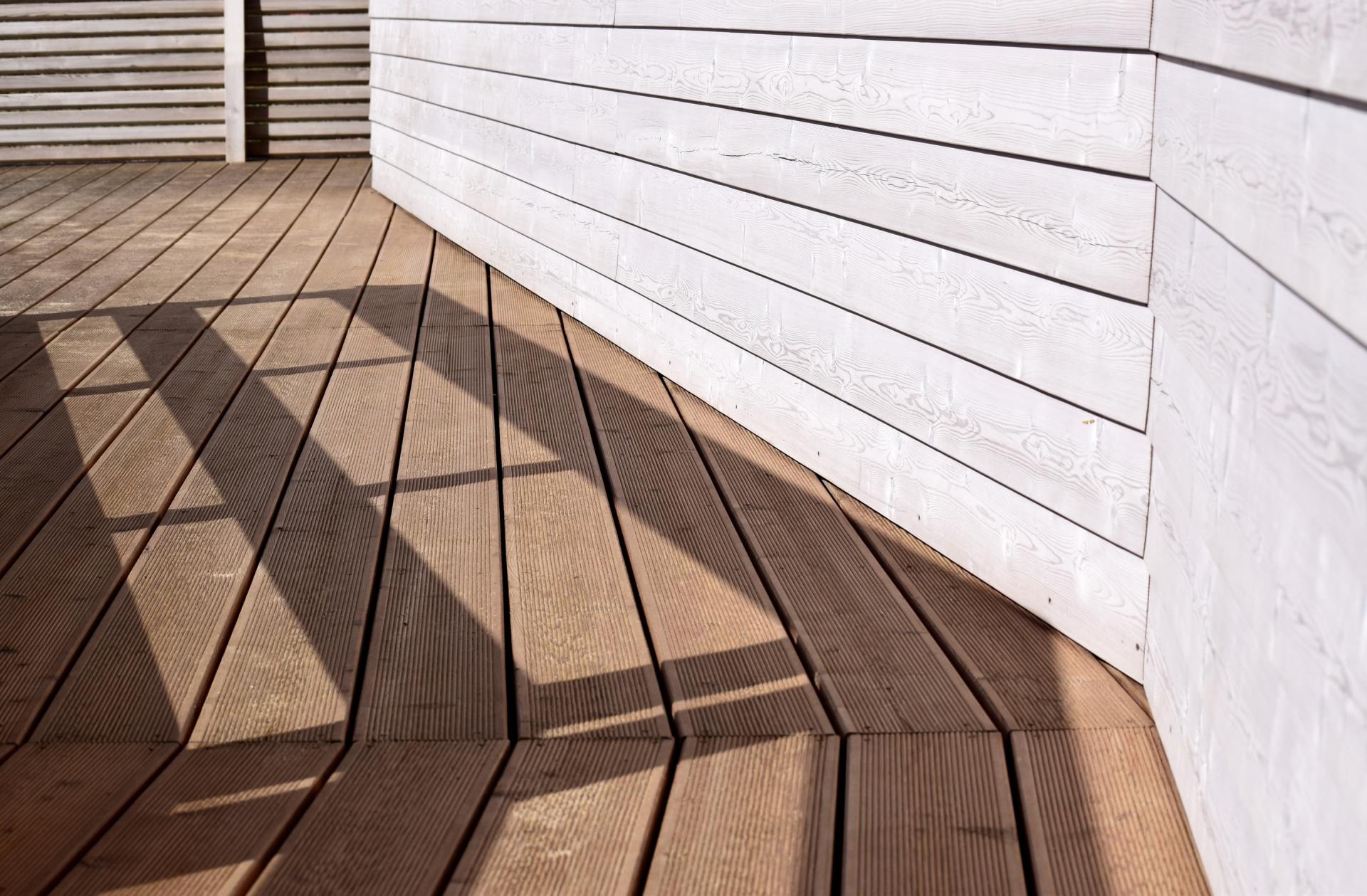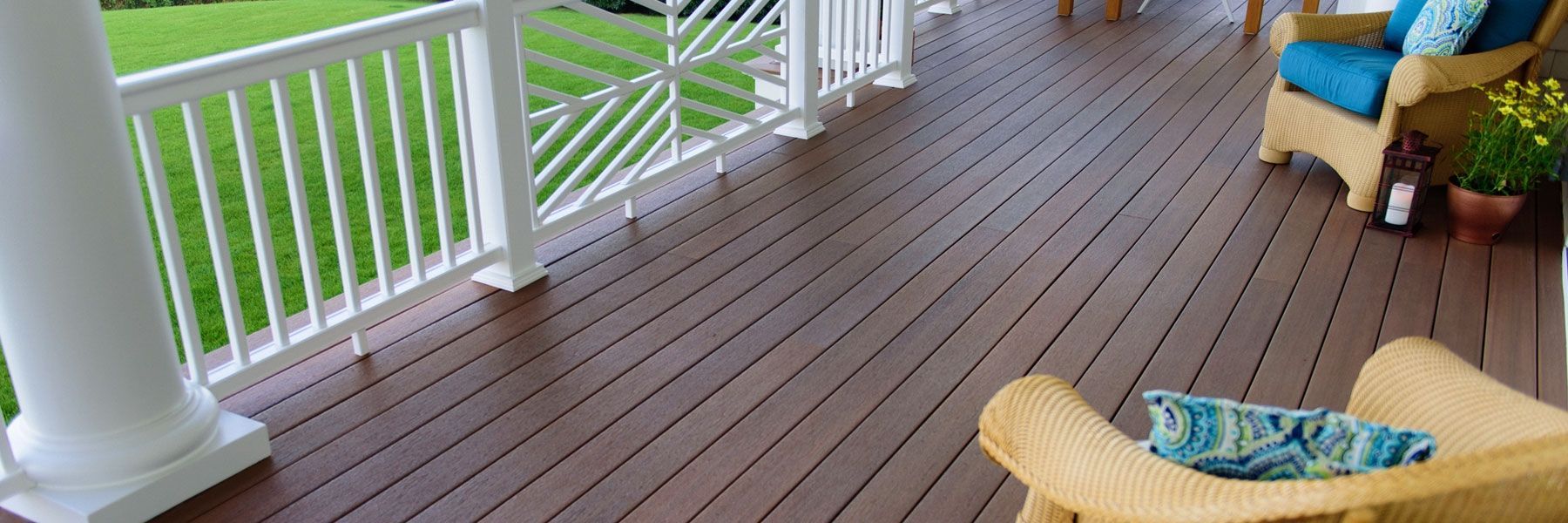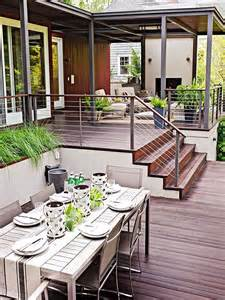Window Replacement: What You Need to Know
beaucheminlumber • November 29, 2017

Replacing your windows can be a great investment in your home. New windows can improve the aesthetic appeal, property value, and of course overall comfort of your home. Not all windows are created equal, though. It’s important to make a well-informed decision when replacing your windows, so here are some factors to consider before committing to any such investment.
Replace or Retro-Fit?
A replacement window is as the name suggests - replacing your current window with a brand new one. This includes windows of different size and shape, which might mean cutting into your home’s siding to make it work. This type happens often during home remodels. Retro-fitting uses the frame of your original window, so that your home’s siding isn’t disturbed. Retro-fitting is the more common type of window replacement, and is often used when someone needs to update the window to a newer model without completely changing the size or shape of the window.
What type of frame material?
- Vinyl windows are the most popular choice for window replacement. They are maintenance free, insulate well, make a smooth operating window, and are relatively inexpensive. The downside is that they are usually only available in white and tan, and vinyl cannot be painted so they may not match every home’s exterior.
- Aluminum windows have poor insulation qualities, but if you already have aluminum windows and you do not plan to replace them all, you can retro-fit yours with dual-glazed and high performance low-e glass to improve insulation. Also, aluminum is available with dark bronze anodized frames which may be a good choice if you want the look of a dark frame, or clear anodized if you want to keep a mid-century contemporary style.
- Fiberglass windows insulate well, are maintenance free, and are available in dark colors. They are also easily painted if you want to change your color scheme at some point in the future. The downside is fiberglass windows are usually pretty expensive.
- Wood windows are available with or without a low-maintenance exterior cladding. If you are restoring an old home and want to stay as true as possible to the original windows, then you may want to choose windows without exterior cladding. If you want dual-glazed windows with low-e glass, they will be nearly as expensive as clad wood windows. Exterior cladding is usually aluminum or vinyl and is available in a variety of colors.
However you decide to replace your windows, at Beauchemin Lumber , we work hard to provide only the best building materials. We carry high quality Trust Gard windows. Aside from prompt, same day delivery, Beauchemin lumber also provides their customers with free estimates and blueprint takeoffs. Contact us today!


In this blog post, we are going to take a look at deck winterizing suggestions. With winter upon us, you need to make sure you protect your property’s exterior. After all, your deck is going to be exposed to the outside elements and so you must make certain that you do everything to protect the appearance and longevity of it. Keeping that in mind, continue reading to discover some of the different steps you should take in order to prepare your deck for winter. Inspect the whole deck surface - The first thing that you need to do is inspect the entire surface of the deck. So, what should you be looking for? Well, if the boards have started to crack, it is definitely time to take them out and get them replaced. However, if they are a little bit warped, you’re going to be fine and you can leave them alone. You do not need to worry about aging wood until it reaches the point that it is structurally unsound. Assess the joists for rot - You also need to examine the joists, as this dictates the strength of the decking. When the joists weaken, the entire deck can start to warp or sag. Joists often suffer from mildew and rot, especially when compared with other parts of the decking. This is because they are not exposed to the direct sunlight. If there are issues with the joists, this is an indication that your deck needs to be replaced. Spot weak railings - There should not be any give to the railing around your deck. If you can wiggle the railing back and forth, then you must take it down and install a new one. When you have a wobbly deck railing, it means that the nails and the screws that are holding it in place have likely gone soft, enabling it to move forth and back. Simply putting in screws or nails is not going to help. This is why a replacement comes highly recommended. Check for peeling paint or stain - If you think that you could have some peeling paint on your decking, stick a strip of tape across the wood and yank the tape up. The tape will pull up any of the wood coating that is no longer sticking. This is something you will be able to fix yourself. The issue with peeling stain and paint is that there is the potential for mold or water to get underneath the material, especially during the winter months. For this reason, it is vital to perform frequent deck maintenance to check the quality of your stain. As you can see, there are a number of different steps that you should take when it comes to winterizing your deck. You want to ensure that you protect your decking so that you do not end up with any expensive damage. If you follow the tips that have been provided, you can make sure that your deck is ready for the winter period.
There’s nothing like a new front door to add serious curb appeal. If you’re considering replacing the front door of a new home, or you’ve decided that your existing door is no longer fit for purpose, here’s a useful guide to front door replacement. Do I need a new front door? We often think about our front doors in terms of their aesthetic appeal, but the reality is that your front door serves a range of purposes. This is a door that is used frequently, and it serves practical as well as decorative functions. There are several reasons why you might be thinking about replacing a front door and switching it for a brand new version. Here are some of the most common reasons to explore the possibility of front door replacement: The door is worn or damaged There are cracks or breaks in the panels The door doesn’t protect against the elements and there’s a draft The door doesn’t hang properly and it’s difficult to open and close You don’t like the look of the door Your door doesn’t provide the level of security you’re looking for If these statements sound familiar, you may be on the hunt for the perfect new front door for your home, but what should you be looking for? What you should know before you replace or upgrade your front door Before you buy a new door, it’s beneficial to consider the following factors: Aesthetics: what kind of look do you prefer, and what type of door suits the style of your home? Materials: front doors are made from a host of different materials, including wood, fiberglass, insulated steel, and aluminum. Weigh up the pros and cons of different materials before you make a decision. Size: it’s crucial to measure the entry point before you buy a new door. You don’t want to get excited about your stunning front door to find that it doesn’t fit properly. The standard width for a front door is approximately 32”-36” but not all homes have standard entryways. Measure the height and width before you start your search. Security: some doors are much more robust than others, and some have innovative safety and security features, which may appeal to homeowners. Steel doors are famed for their sturdiness. Cost: the cost of front doors varies hugely depending on the size, the style, and the material. Before you start shopping, set a budget. Energy efficiency: most homeowners are looking for ways to reduce energy consumption and save money on electricity bills. If you’re used to living with a draft, you may be pleasantly surprised at the difference a brand new, energy-efficient door makes. Which type of front door is best for my home? If you’re looking for a new front door for your home, it’s wise to explore all the options, to take a look at different styles and to weigh up the pros and cons of different materials and types of door. If you have any questions about front doors, or you could do with some advice, we’d be happy to help. Call Beauchemin Lumber today!
If the time has come for you to replace an interior door, then there are probably a host of nagging questions running through your mind about how to go about doing it correctly. In this article, we’re going to take a look at five tips for interior door replacement you can count on. Tip #1: Ensure That Replacement Doors Match If you plan on replacing a single door (rather than all of the doors in your home), then it’s important to make sure that your replacement door matches. Choosing a different style of door will make your interior space feel incoherent and will disrupt your design theme. The good news is that you don’t have to choose an identical door: just one that offers the same proportions and colors as the others in your home. Tip #2: Get A Professional To Perform The Interior Door Replacement Although installing an interior door is something that you might be able to do yourself, it’s almost always better to get a professional installer to do it for you. One of the problems that you’re likely to face is the door not lining up with the frame. It’s all too easy to drill the hinges into the wall, only to find that the door doesn’t swing freely once installed. Professionals have special tools that they use to make sure that the door is true before committing to an installation. Messy installations can leave unwanted drill holes in both your new door and your door frame. Tip #3: Understand The Different Types Of Door Not all interior doors are the same. There are a wide variety of styles. French Doors. These are usually double doors that open onto an outdoor space. Faux Wood Doors. Faux wood doors are made from materials other than wood, like hardboard. Bifold Doors. These doors fold in the middle and sweep to the side, rather than swing. Fire Doors. Fire doors are made of special flame retardant materials. Solid Wood Doors. These doors are made of individual pieces of timber, not chipboard. Once you know the different types of door, you’ll be in a much better position to know which you should choose for your interior. If you already have solid wood doors in your home, for instance, then it’s probably a good idea to choose a solid wood interior door replacement. Tip #4: Update Your Doors With New Trim You don’t always have to replace the whole door. Instead, you can freshen up the look of your doors by changing the trim. There are several different types of trim from which to choose: Flat This is where the trim is flush to the wall. Flared Crown Molding Flared crown molding is a type of trim that sticks out of the door frame, providing a depth to the door surround. Easy-Paint Easy-paint door frames make applying emulsion and top-coat a breeze. Tip #5: Check Your Door Clears The Rug Be careful when installing your door. You need to account for the space taken up by your rug or carpet. Place a spacer under the door during installation to make sure that it has enough clearance.
Since its conception and promotion as the “decking material of the future”, composite decking has faced a fair share of scrutiny over the years. With time, myths have developed about composite decking, both good and bad. In order to get a clear picture, we have to go through these myths and discern fact from fiction. And as always, if you’re in need of expert advice or assistance, the friendly team at Beauchemin Lumber is always ready and willing to help! Myth: Composite decking is hard to install. While this might have been true when composite decking first hit the market, it’s not an accurate representation of the materials on today’s market. These days, installing a composite deck is a lot like working with wood -- some even claim it’s easier due to the clip system. Guides exist online to streamline the process and encourage amateurs to try it out themselves, and many brands are working to improve the installation process further. Need help with understanding what’s needed for installation of the materials you have in mind? Give the team at Beauchemin Lumber a call today and let their expert material supply team help you with everything you need. Myth: composite decks require no maintenance. Decks don’t clean themselves, sadly. While they generally don’t require heavy maintenance, composite decks do require some TLC to stay clean and shiny. This includes sweeping and the occasional mopping with soap and water. However, since composite decks aren’t made of wood, sanding, varnishing, and oiling are not required. Myth: it looks like cheap plastic. Again, this might have true earlier, composite decking has evolved since its introduction. One of the primary drawbacks of the first composite decking to hit the market was its appearance. Since that time, manufacturers worked to create a more attractive, realistic texture. Nowadays, composite decks look very similar to rich, refined wood decks. Some people even prefer the appearance of composite decks to traditional materials, since they resist much of the wear-and-tear wood falls victim to. Myth: composite decks fade and scratch over time. Before being tweaked, the makeup of composite decks resulted in some unpleasant aging. However, the early models from before are not the same manufacturers make today. Composite decks are capped, and can last up to 25 years without fading or warping. Their outer shell also protects them from scratches, unlike wooden decks. Myth: Composite decking is too expensive. At first, composite decks were touted as the new, futuristic option. They were luxury-priced, and their quick degradation gave them a bad rep among future buyers. Times have changed, and now composite decking materials are far more affordable. Combined with the bug-fixes and the aesthetic tweaks, composite decking is ready to serve as actual competition for traditional wood decks. Myth: composite materials aren’t eco-friendly. If you’re someone who is rightfully concerned about the state of the environment, you might shy away from things usually considered “plastic” materials. However, many composite decks are made using recycled materials, and will last longer than a traditional wood deck. It serves as a viable alternative for wood, which is usually obtained via harmful logging practices. Closing Thoughts While many of the myths surrounding composite decks will be hard to dispel, many are trying to disprove these misconceptions. Composite decking’s troubled history harmed its future reputation, but it’s coming back in a big way. With all the bugs being ironed out, it’s shaping up to be a reliable material for homeowners and deck companies everywhere.

More and more homeowners are choosing to have their decking built from composite lumber rather than use real wood. Composite lumber is made from recycled plastic, sawdust, and other wood byproducts. Composite decking requires little to no maintenance and won't rot, twist or splinter. More expensive than wood, but valued for its efficiency and striking resemblance to real wood which manufacturers have perfected, composite material is an excellent choice for decking. Composite Decking: where NOT to use it Avoid using composite lumber for support framing. Some composite framing lumber is now becoming available, but composite lumber is not as strong as wood, and not typically made for structural, load-bearing use. Some manufacturers now offer products such as handrails and stairs. Check with local code requirements before building railings or stairways with composite lumber. Reserving composite lumber for the surface decking and building the railings and other parts out of traditional wood saves money too. Decking Price Differences The difference between expensive and more economy composites isn't a matter of quality, but of style, color, and texture. If you're wanting the most realistic look, complete with texture, be prepared to shop a little on the high side. It is the highest quality of composite decking that resembles real wood the most. This product is pricey but homeowners enjoy the varying patterns and tones that make the composite look remarkably realistic. Dirt can be easily trapped in textured composite planks, however, and this type of composite decking requires more maintenance as a result. Climate Considerations When considering composite decking, consider the climate where it's being installed. Composite decking gets very hot when exposed to direct heat and you may need a shade structure to keep your deck comfortable in warm climates. Composites are susceptible to mildew and algae staining, especially in shady, damp locations. In snowy climates, composites can be extremely slippery underfoot. Because composite decking gets so slippery when wet, composites shouldn't be used for pool decks or stairway treads. Working with Composite Decking Composite decking boards can be cut with a circular saw and installed by pre-drilling holes and using screws, just like typical wood boards, or you can choose to use a hidden fastener system. Using tongue-and-groove attachments or hidden metal clips under the deck to attach it produces a neat and clean look, but hidden fastener systems can be quite expensive. Allow for drainage under your composite deck. Any moisture trapped on top of the wood joists under the decking can make them vulnerable to decay. Closing Thoughts – is composite decking the right choice? There are many advantages to using composite material for decking. While traditional wood decks have a lifetime of 10 to 15 years, composite decking, resistant to rot, bugs, and weather, typically lasts twice as long. Composite decking is easier to maintain and keep clean. It doesn't fade or give you splinters. And high-quality composite decking looks just like your favorite wood species. Beauchemin Lumber is a highly rated local supplier of quality composite decking. Search the selection for composite decking that meets your project's needs!

A deck has always been an integral part of a home’s feature, and as outdoor cooking continues to be popular, it’s a trend that isn’t going away anytime soon. In fact, homeowners are pushing the limits when it comes to the design and features of decking. Much like Ford’s first T model, you could have any color as long as it was black. The same was true of decking, you could have one, as long as it was wood. Thankfully decking has evolved as much as its functionally. Homeowners started to see their decks as an extension of their interior living space and the design elements were incorporated with entertaining in mind. The humble decks of yesterday are gone, and homeowners are trending toward materials that stand the test of time and require little upkeep. Here are the three most popular types of decking: Composite Decking This type of decking offers all the beauty of a traditional deck without getting splinters! It is a high-performance, eco-friendly wood alternative that offers the warmth and appeal of natural wood and is virtually maintenance-free. It comes in a wide-variety of colors and finishes depending on your budget. PVC Decking PVC decking is also a great option to go with since it has a resilient surface and patterns that are slip-resistant. The decking also has exceptional resistance to moisture, dent s, and flames and is sturdy enough to create a hard-wearing yet easy-to-handle board. To top it all off, they come in several color options. Pressure Treated Decking There are several reasons to pursue pressure treated decking. It’s stainable, hard enough to deter abuse, and many brands carry a lifetime warranty. However, be cautious of inexpensive wood because there’s a chance it could be full of moisture, and will, in turn, shrink unevenly when it dries. At Beauchemin Lumber, we’re a full-service lumber yard that believes in giving our customers the best quality. We provide composite decking and stand by our opinion that it is one of the best options for those who are ready to expand their home with a deck. For more information on our services and products, you can visit our website or give us a call at (401) 762-1657.

Is there anything better than enjoying the fall weather from the privacy of your home’s deck? It’s the perfect place to revel in the perfect temperatures, and spend quality time with family, and friends. But because we get so much pleasure out of spending time on our decks, that also means that there is a risk that they wear down quicker. It is crucial to maintain the appearance and quality of your deck so you can keep enjoying it for countless seasons to come. We at Beauchemin Lumber often get asked not only about the best ways to take care of their deck, but if composite decking offers the best solution for look and longevity. For those homeowners that are unfamiliar with this material option, composite decking, according to Trusted Pros , is made of a mixture of materials, such as wood or recycled plastic, to give your deck the genuine look of wood without a great amount of maintenance. Sounds like an exceptional solution, right? It is. Here are a few great advantages to composite decking that you need to consider.